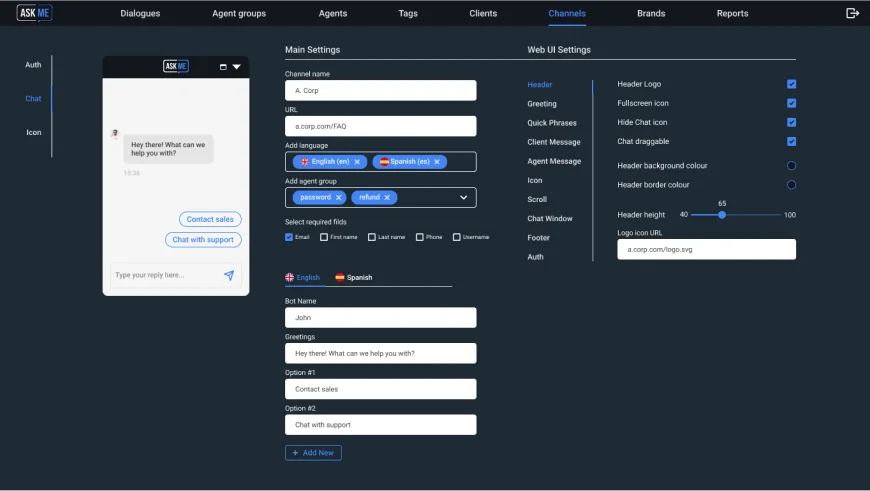For instance, our cryptocurrency-based core banking platform for Asian Bank was capable of increasing their broad horizons. We created a central ledger to maintain transactions while simultaneously creating a system that supported both FIAT and crypto user fund’s identity. The app was capable of making cryptocurrency transactions mainstream for the bank. Adding feathers to our cap, the cryptocurrency app was further capable of witnessing 50K+ cryptocurrency transactions.

So, contact Icoclone for kickstarting your crypto wallet app development instantly. Here, the user will have full access to the private keys and funds in non-custodial wallets. Basically, non-custodial wallets exist in further various forms.
Grodlex.com — new crypto exchange gives 0.32 BTC!
If you don’t have developers with the required experience, contact the Code&Care team. Now that we’ve talked about the features that need to be integrated when building a Bitcoin wallet, it’s time to talk about the technical side of building a Bitcoin wallet app. Now, hardware wallets are the most secure type as they store bitcoins on physical hardware, which is usually connected to a computer via a USB port. They are virtually immune to virus attacks and there have been several reported cases of bitcoin theft. The demand and comfortability around cryptocurrencies have grown to such an extent that several online stores now offer the ‘Pay with Bitcoin’ option in their apps and websites. By adding two-step authentication in the app, businesses can add a security layer generally avoided by generic non-crypto-based apps.

The public key would be your credit card number, while the private key would be your PIN. You can easily share your public key with anyone, but the private key must remain secret only to yourself. If your private key is compromised, you are at risk of losing all of your funds permanently. And like any debit card, as long you have funds on your account, you can spend money. Given the popularity and value of cryptocurrencies, wallet apps are prone to many security attacks. Here are the essential features that you must include in your crypto wallet app.
Advantages of crypto wallet apps
Part of the planning phase includes identifying the skills needed for your app development initiative. If your goals are to build a mobile app for both iOS and Android mobile platforms then, your mobile development team should include iOS developers and Android developers. It is one of the main features that make it easy to restore the wallet when the wallet is deleted or moved to another device. The mnemonic passphrase is usually attached to the private keys so that they can be matched with security features.
- A crypto wallet has private keys that allow people to sign transactions on the blockchain.
- For example, in case you want to build a web app, you can use Node.js or Angular.js, along with HTML5 and CSS3.
- Both desktop and smartphone apps are available as software wallets.
- Yes, a private key is like the login credentials of your wallet that anyone can use to access and misuse your wallet.
- The described stages and nuances of developing cryptocurrency wallets do not include legal subtleties.
- Information can be presented “as is”, in the form of QR codes or encrypted.
Crypto wallets are the only way to provide users access to these platforms, allowing them to utilize their benefits. From major banks to startup enthusiasts looking to leverage crypto trading systems and scale better growth. The public and private keys are maintained by a central authority or an exchange owner in custodial wallets. The transactions that are made with the custodial wallet will be monitored by a third party. Usually, custodial wallets come along with centralized exchanges where the users will login and hold a wallet account.
Complete Blockchain Cryptocurrency Wallet Development Technology Stack
The legal status of cryptocurrencies and blockchain technology varies significantly from country to country. All these components give an oriented portrayal of the blockchain application development range. Setting up any blockchain application requires a robust project assessment that can determine the expenses required . The develop cryptocurrency wallet entire purpose of implementing blockchain technology is to promote safer and more secure transactions. With this feature, users are made to sign up or fill in a form with their keys to access the Bitcoin wallet. The ongoing buzz of blockchain technology has coerced major financial organizations to invest in its benefits.

The crypto wallet application should make it possible to buy and sell cryptocurrency assets, execute buy and sell orders, and organize trades between users. The wallet provides an isolated environment for signing cryptocurrency transactions offline. Trezor is equipped with a touchscreen and has a convenient interface, which makes it easier to use. You can send transactions to multiple recipients at once and use universal two-factor authentication to protect your assets. Based on how the wallets work, there are hot (software) and cold (hardware) cryptocurrency wallets.
Desktop Wallets
After getting the initial user feedback, you can then switch to a fully-fledged app integrated with extensive features. The cryptocurrency wallet development company offers a full range of services and is aware of all the nuances and complexities that may arise when creating a wallet app. In conclusion, cryptocurrency wallets have become a vital part of the cryptocurrency ecosystem, allowing users to securely store, send, and receive cryptocurrencies. Developing a cryptocurrency wallet app can be a profitable business venture, given the growing demand for secure and user-friendly wallets. With a well-designed and secure cryptocurrency wallet, businesses can attract users and generate revenue from transaction fees, exchange fees, and subscription fees for premium features.
Developing a cryptocurrency wallet app requires understanding the underlying blockchain technology. A blockchain is a distributed peer-to-peer database with major governing rules for adding data, and the technology serves as an open ledger for each cryptocurrency. Another way to cold-store cryptocurrency assets is through paper wallets.
Years of Experience that Helps Accelerate Your Business
This is also a skill that you should know for your assets will be safer if you put them in an offline storage. Because it would be hard for an online thief to hack a wallet that works offline. Yes, a private key is like the login credentials of your wallet that anyone can use to access and misuse your wallet. VeWorld’s first iteration includes features such as support for VIP-180 tokens (VeChain’s native token standard), currency conversion (either in Euro or USD), and fee delegation. Creating a unique crypto token on various blockchains with our experienced blockchain developers and enhance your crypto business. When some time passes without user activity, the application closes automatically.
If your software development company wants to offer something to crypto adopters and gain success in the market, you should know how to develop a Bitcoin wallet app. There are more than 70 million holders of Bitcoin wallets, according to Statista. People need crypto wallets to buy, sell, and exchange digital money. They can create a Bitcoin wallet on the cryptocurrency exchange, use a separate service, or install it on their mobile device, personal computer, or tablet. Since even the largest and most secure crypto exchanges get hacked, people try to store their digital assets in cryptocurrency wallets. Therefore, you have a unique chance to develop your own Bitcoin wallet app and offer it to users.
How Can Enterprises Navigate the Regulatory Compliance Landscape with Blockchain?
Your app must allow its users to scan a paper wallet using the QR code for sending and receiving crypto money. Many crypto followers see cold storage as the best option for protecting your digital assets. Since they’re offline, these wallets are considered the most difficult type of wallet to hack. They store your keys offline on a device that’s not connected to the Internet. Many in-demand cold storage wallets look similar to a USB drive. The private key of your crypto wallet can be compared to your bank account password or the PIN to your debit card, which is confidential.



